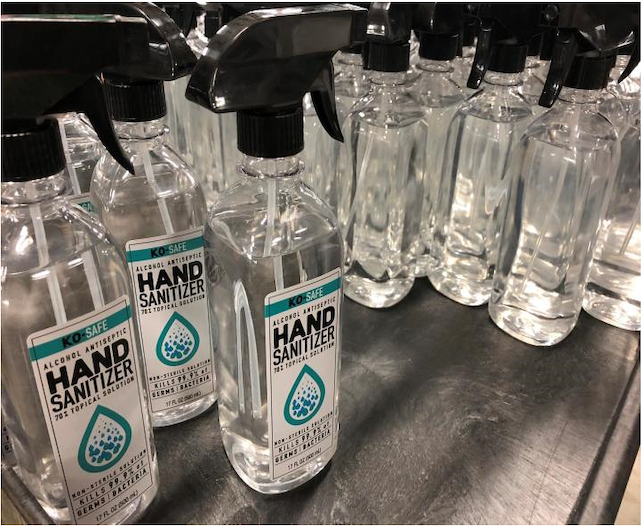Speed and Agility — the Engines Behind the New Normal
Along with the health threats of COVID-19 came a host of unpleasant impacts to daily life, such as shortages. Retailers were unable to keep up with the demand for staples like toilet paper, paper towels and such. It was far worse for the healthcare provider’s PPE supply chain. They were lacking essentials they were told they would need, such as face masks and shields, hand sanitizer and life-saving ventilators.
Innovators to the rescue
Businesses large and small heard these calls of distress. It has been well documented that some of the large auto makers provided much needed ventilators. For the most part, however, it’s been small alliances (firms with compatible resources) that have made the most interesting contributions — in large part because they can be fast and nimble.
A few examples:
Modular construction: The Boldt Company teamed up with HGA Design to create pre-fabricated critical care negative air-pressure isolation rooms, called STATT Mods. Typical rooms are 12 x 15 feet and can be connected with other modules so that hospitals can add critical care space as needed…even a whole, free-standing facility so that COVID patients are safely distanced from normal hospital traffic.
Hands-free door opener: Created by British designer Steve Brooks, the “Hygienehook ” comes in 4 sizes — one small enough to carry in a pocket — and is made from easy-to-clean, non-porous material. Devices like this could be a “gamechanger” in healthcare environments and retail stores moving forward.
The power of an agile network
In early March, my firm, FORCEpkg, joined a consortium of Pennsylvania-based companies called Berk’s PPE Resource Network. This group uses a crowd-sourcing approach to create, manufacture and distribute personal protective equipment or PPE including face shields, mask frames and straps used by healthcare workers and first responders.
FORCEpkg turned to its new 3D printer and reached out to other resources and friends to help. The group went from producing 20 face shields per day to several hundred. With the help of 90+ volunteers, the network produced and donated over 31,000 pieces of PPE.
Clean hands in record time
Early on in the crisis, everyone remembers rushing to the store for hand sanitizer and being greeted with an empty shelf. On March 23, I got an email from a former colleague who wanted to leverage their processing and packaging solutions to produce a new hand sanitizer brand. They needed help with naming, design and FDA-compliant packaging — and they needed it yesterday.
FORCEpkg partnered with K2 Kinetics to help launch KO-Industries and the KO-SAFE™ brand. In just three weeks, we were able to help them pull off something incredible — design and develop the KO-Safe brand, set-up 5 different sets of package labels and actually print more than 10,00 labels on our packaging prototyping equipment. Along with all of the material/component sourcing challenges – bottles, caps, trigger sprayers and liquid ingredients – the product was still on retail shelves within a few weeks. This company didn’t exist until mid/late March 2020.
Setting a precedent for the future.
Remember how 9/11 changed traveling forever? The increased security and technology are still with us today and evolving. I believe we will see similar transformations as a result of the pandemic. And slow and steady will no longer rule the day. In fact, companies large and small are going to have to start thinking like indie brands.
Some of the changes we’ll likely see:
Relationships matter more than ever: As noted above, when different companies come out from behind their own silos, they can form SWAT teams that answer market demands in record time. In fact, what we’re seeing will no doubt result in some spin-off companies that started as a charitable response to a crisis.
Ecommerce leaps forward: The numbers captured so far are telling. According to data from the Forter Global Merchant Network, there has been a 14% increase in volume for ecommerce shopping from March 23 to March 30 alone, and this increase is predicted to continue. It may signal a permanent change in behavior, where all generations feel comfortable shopping online.
How do brands and their agency partners respond? With speed and agility. You need the flexibility to handle both online and traditional and to switch emphasis between them at the drop of a hat. Remember, humans are still social animals — just look at how many are walking, running, biking and lining up outside of Target. People will eventually seek to be “in the herd” in the grocery aisle or department store.
If it takes a year to get to market, don’t bother.
I had a call recently with a client about the launch of two potential new products. One of the main objectives was to have them ready for a trade show in six months. I told them it sounded like they had potential winners, but you need to be on the shelf (or at least online) before that show. The trade show should be for demos and telling consumers where it’s currently available. If it takes 12 months to get it into consumer’s hands… don’t bother. I know it sounds harsh, but the fact is, business just doesn’t operate the way it used to.
In the old days, you’d wait until your offering was perfect before release. Now, you are better off getting out there early and correcting any packaging or messaging glitches on the fly. Adapt, change, evolve, and do it quickly. The reason? As original as your innovation may be, someone else will eventually think of it. Unless you’re first, the big guys will develop that same idea and squash you with their “marketing horsepower”.





Leave a Reply